Mardi Himal Trek in July – When it comes to trekking adventures in Nepal, the Mardi Himal Trek stands out as a hidden gem, offering breathtaking vistas and an off-the-beaten-path experience. While many trekkers flock to Nepal during the peak seasons of spring and autumn, the monsoon season, which spans from June to August, presents a unique opportunity to embark on this lesser–known journey.

In this blog, we will explore the captivating Mardi Himal Trek in July, amidst the rain–soaked landscapes and ethereal beauty of the Himalayas.
Weather Conditions and Temperature of Mardi Himal Trek in June
While the monsoon season might deter some trekkers, July can also be a unique and thrilling time to explore Mardi Himal. Let’s take a look at the weather conditions and temperatures you can expect during this time of the year.
The Monsoon Season
July falls within Nepal’s monsoon season, which typically runs from June to September. During this period, the country experiences heavy rainfall, especially in the afternoon and evenings.
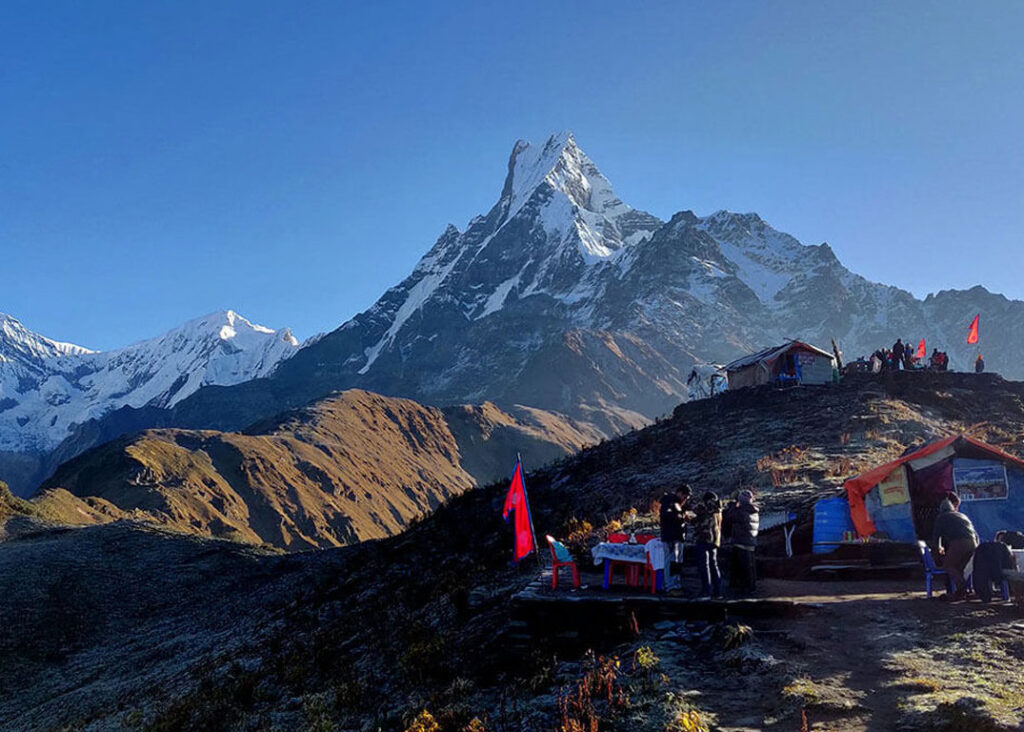
While the monsoon can bring about challenges like muddy trails and occasional landslides, it also bestows the region with unparalleled beauty, as the vegetation thrives and the landscapes are adorned with vibrant colors.
Weather Conditions
July in Mardi Himal is characterized by warm temperatures and high humidity due to the monsoon rains. The mornings generally start with clear skies and relatively pleasant weather, with temperatures ranging from 15°C to 20°C (59°F to 68°F). However, as the day progresses, clouds start to form, and rainfall becomes more frequent and intense.
Rainfall
The monsoon season is synonymous with rain, and July is no exception. During this month, you can expect a significant amount of rainfall, with an average of 350-400 mm of precipitation throughout the month.
Also Read: Mardi Himal Trek in June
The rain showers are often heavy but sporadic, lasting for a few hours and occasionally continuing overnight. It’s crucial to be prepared with proper rain gear including a waterproof jacket, pants, and sturdy hiking boots.
Visibility and Cloud Cover
Due to the frequent rain and clouds, visibility in July may be limited. The clouds tend to hang low, partially obscuring the views of the surrounding mountains.
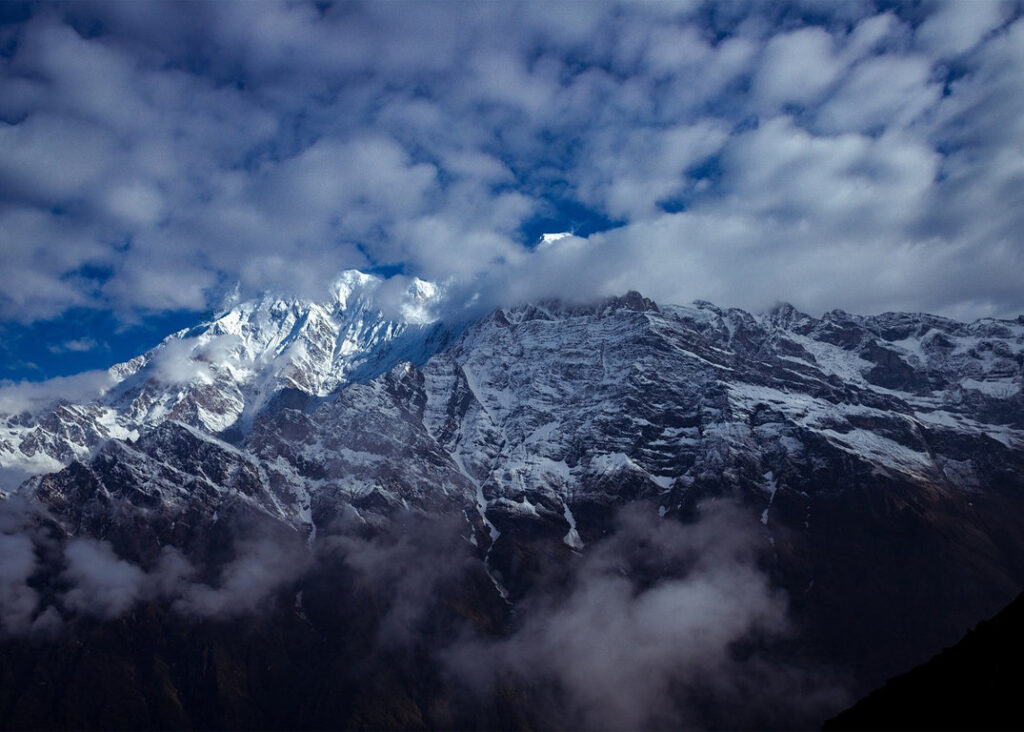
However, when the skies briefly clear up, you’ll be rewarded with glimpses of the majestic peaks and breathtaking landscapes.
Temperature and Humidity
The temperatures during July in Mardi Himal range from 10°C to 20°C (50°F to 68°F) during the day and drop to around 5°C to 10°C (41°F to 50°F) at night. The humidity levels remain high throughout the day, contributing to the verdant growth of flora and creating a refreshing ambiance. It’s advisable to wear breathable and moisture-wicking clothing to stay comfortable during the trek.
Highlights of Mardi Himal Trek in July
While many may choose to embark on this trek during the peak season, venturing into the Mardi Himal region during July’s monsoon season unveils a whole new world of captivating beauty and untouched landscapes. Let’s explore the highlights of undertaking the Mardi Himal Trek in July and discover the hidden gems that make it a truly mesmerizing rainy adventure!
Lush Greenery
One of the most striking aspects of trekking Mardi Himal in July is the lush greenery that blankets the entire region. The monsoon rain breathes life into the forests, transforming them into a vibrant and magical landscape.
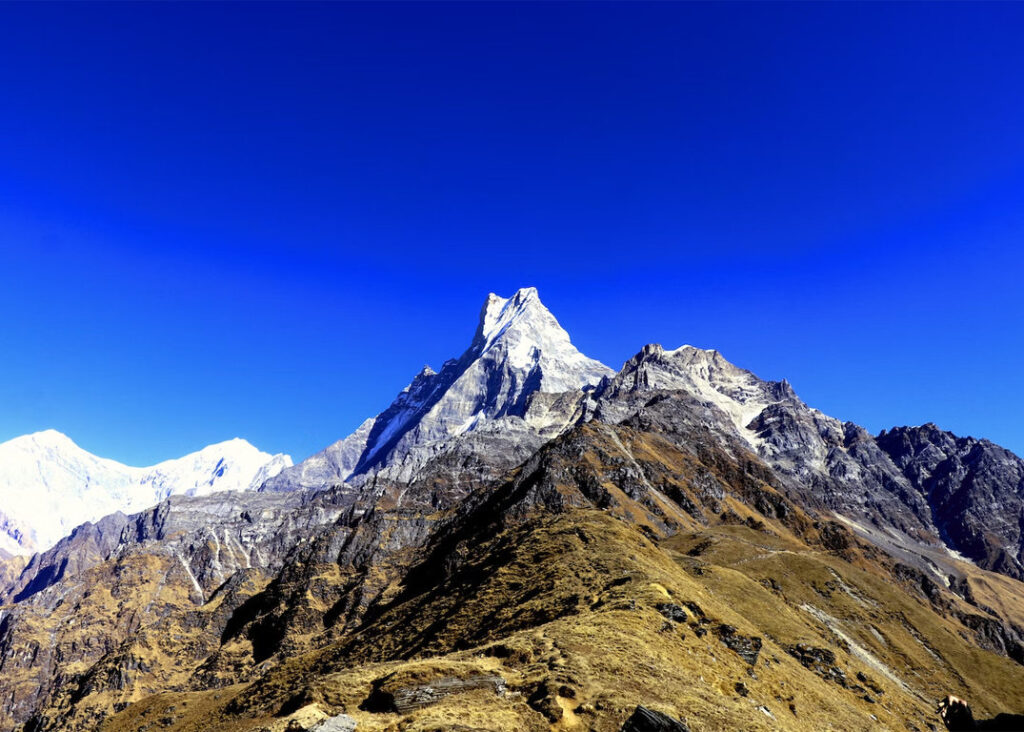
Walking through trails adorned with verdant ferns and moss–covered trees creates an immersive experience like no other. The refreshing scent of damp earth combined with the symphony of raindrops falling on leaves will make you feel profoundly connected to nature.
Fewer Crowds
If you prefer a quieter and more secluded trekking experience, July is the perfect time to embark on the Mardi Himal Trek. Due to the misconception that monsoon season is unsuitable for trekking, you’ll encounter fewer tourists along the trail, allowing you to immerse yourself fully in the serene surroundings.
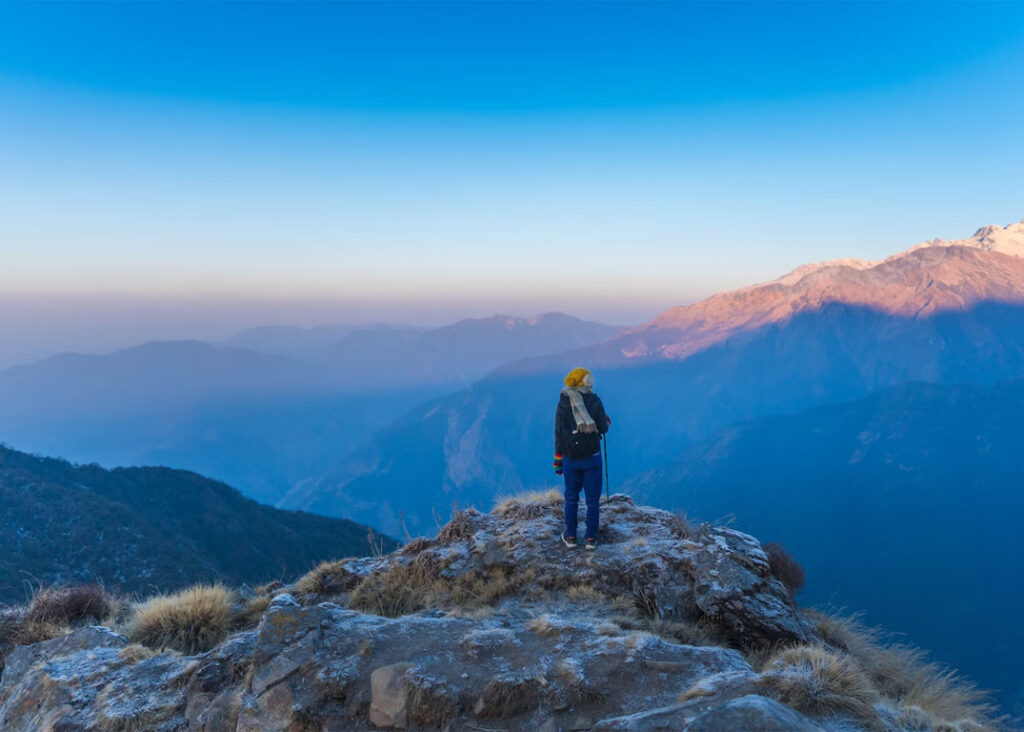
The tranquility of the monsoon rain in the mountains, punctuated by occasional clear skies and stunning panoramic views, creates an atmosphere of peace and solitude that is rare to find during the peak season.
Spectacular Waterfalls
The monsoon rains fill the mountains with a network of gushing waterfalls, adding an extra touch of enchantment to the Mardi Himal Trek. The cascading waterfalls, some of which can be quite impressive in size, create a breathtaking spectacle against the backdrop of lush green valleys. Be prepared to be awestruck as you witness the raw power and beauty of nature’s waterworks along the trail.
Read: Mardi Himal Trek in January: Weather, Difficulty, Temperature, Travel Tips, and More
Mystical Clouds and Dramatic Views
While the monsoon season may bring intermittent rain, it also offers a unique atmospheric setting for trekkers. As clouds drift in and out of the mountains, they create an ethereal ambiance, shrouding the landscape in mist and adding a touch of mystery.
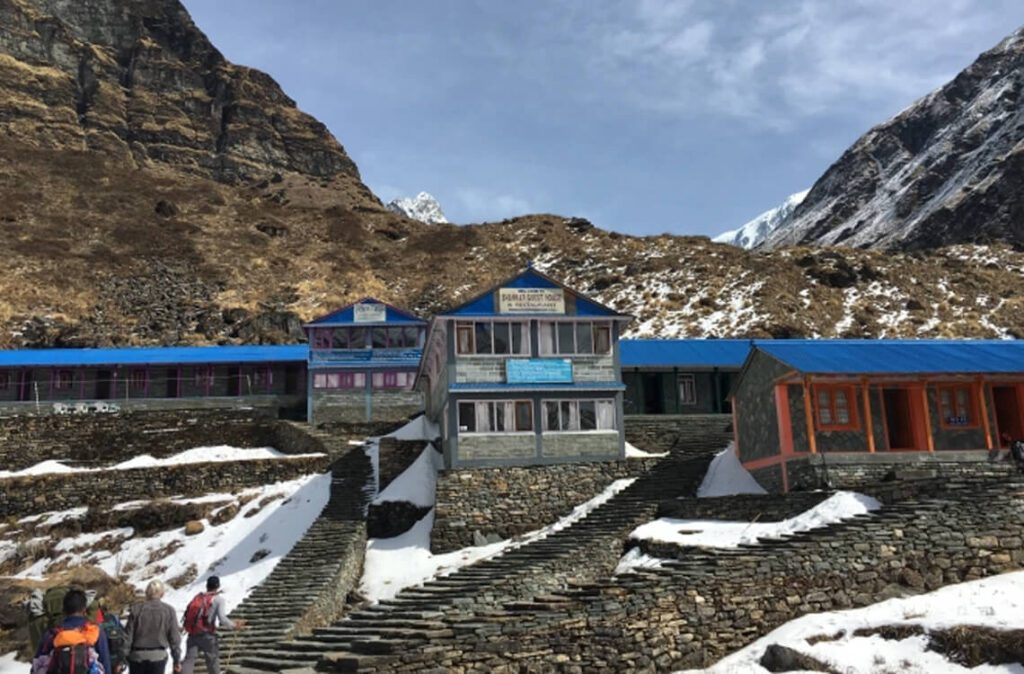
When the clouds part, you’ll be rewarded with dramatic glimpses of snow–capped peaks, including the iconic Machapuchare (Fishtail) and Annapurna ranges. These moments of clarity amidst the cloudy veil make for awe-inspiring and truly memorable vistas.
Cultural Encounters
The Mardi Himal Trek not only offers natural wonders but also provides an opportunity to immerse yourself in the rich local culture. The monsoon season is a time when villagers celebrate various traditional festivals, giving you a chance to witness and participate in their vibrant rituals and ceremonies.

Interacting with the warm and welcoming locals and experiencing their way of life can add a whole new dimension to your trekking adventure.
Water-crossing Thrills
The monsoon season brings an added element of excitement to the Mardi Himal Trek – river crossings. As the rain swells the rivers and streams, you’ll encounter several water crossings along the trail. This adds an element of thrill and adventure to your trekking experience.
Interesting: Mardi Himal Trek in February: Weather, Difficulty, Travel Tips, and More
Whether hopping across rocks or using sturdy suspension bridges, navigating the rushing water is an exhilarating challenge that will leave you with a sense of accomplishment.
Mesmerizing Sunrise and Sunset
Don’t miss the opportunity to witness the magical sunrise and sunset during the monsoon season on the Mardi Himal Trek. As the clouds disperse, the golden hues of the rising or setting sun cast a spellbinding glow on the surrounding mountains and valleys.
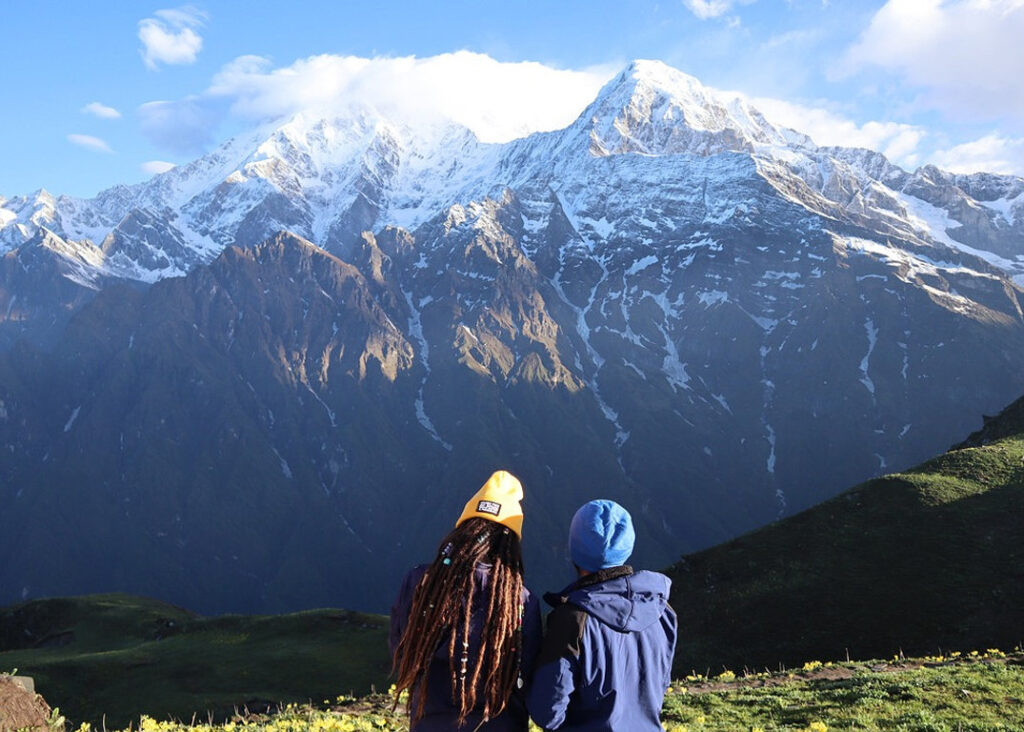
The mist and rain-washed atmosphere create a dreamlike ambiance, making these moments truly unforgettable and capturing the essence of the Himalayan landscape in its most enchanting form.
A Photographer’s Paradise
The Mardi Himal Trek in July presents an incredible opportunity for photography enthusiasts. The interplay of rain, clouds, and sunlight creates a magical canvas for capturing breathtaking shots. The vibrant green landscapes, misty mountains, cascading waterfalls, and cultural encounters provide an abundance of subjects to capture and immortalize.
Also Read: Mardi Himal Trek in April: Temperature, Difficulty, Travel Tips, and More
Get your camera ready and let your creativity soar as you document the unique beauty of this monsoon trek.
Authentic Local Experience
Trekking in the monsoon season allows you to have a more authentic and intimate interaction with the local communities along the Mardi Himal Trail. As the tourist numbers decrease during this time, you’ll have more opportunities to engage with the locals, learn about their traditions, and experience their warm hospitality.
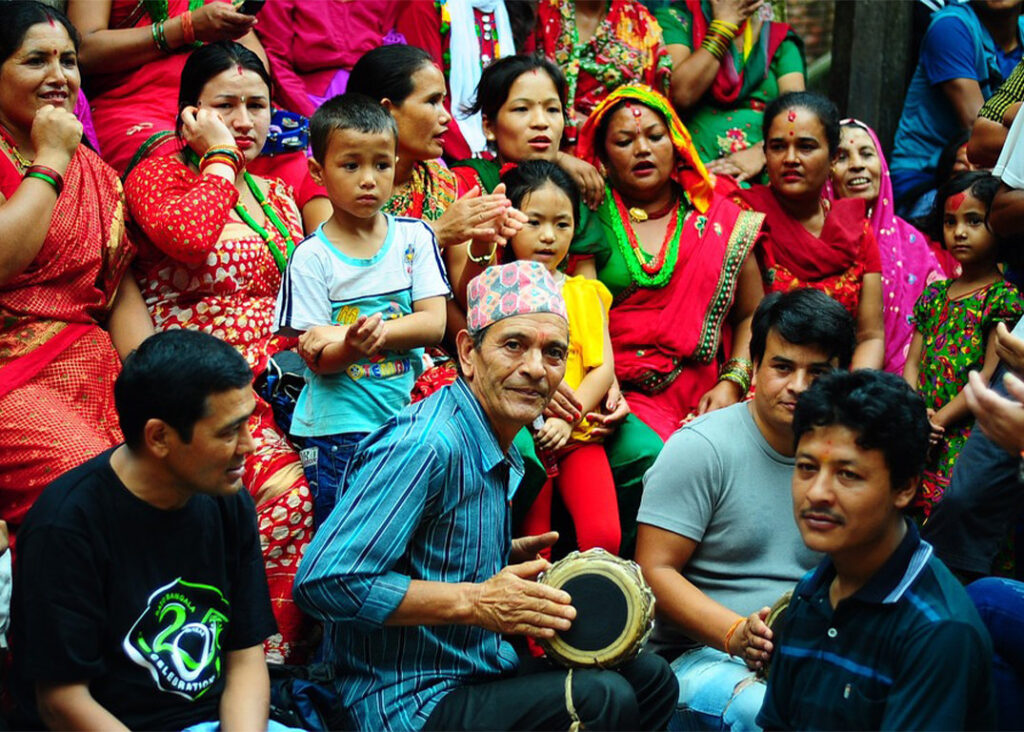
From sharing a cup of traditional Nepali tea with a local family to participating in cultural activities, you’ll gain insights into the rich local culture and forge meaningful connections with the people of the Himalayas.
Kathmandu to Mardi Himal Trek
The Mardi Himal Trek is a captivating and less-traveled route in Nepal’s Annapurna region. Starting from Kathmandu and reaching Pokhara by flight, the trek begins with a moderate hike through rhododendron forests and farmlands. As you ascend, the landscape changes, offering panoramic views of snow-capped peaks.
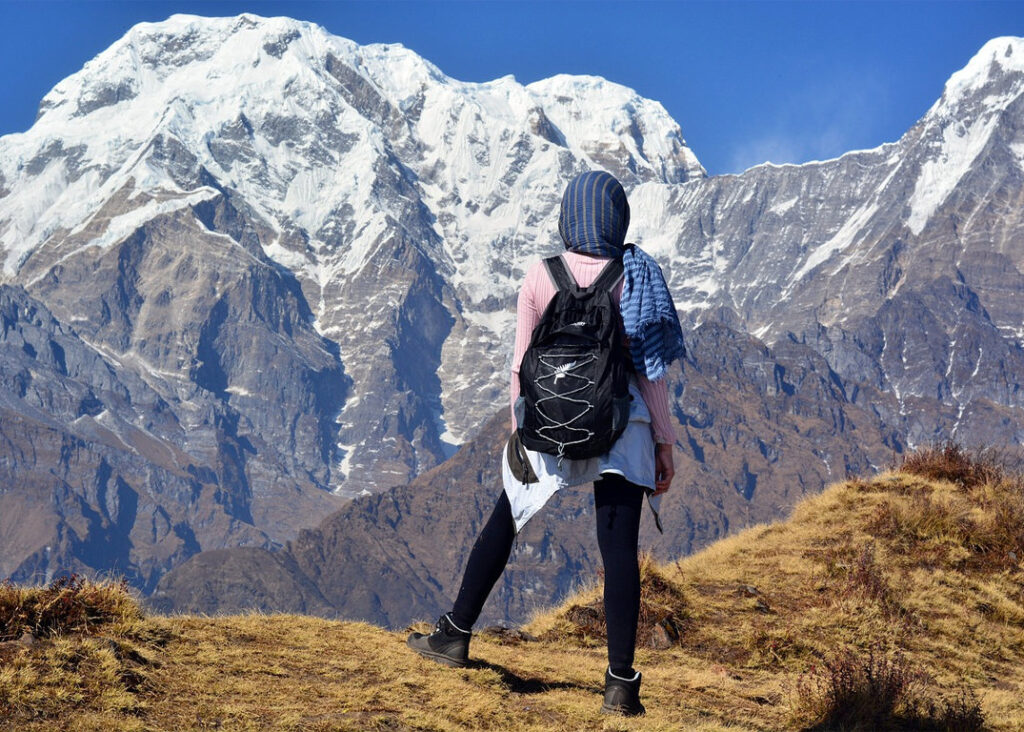
The trail passes through Gurung and Magar villages, providing a glimpse into the local culture. The highlight is the ascent to Mardi Himal Base Camp, where you witness breathtaking vistas of Annapurna and Hiunchuli mountains. After savoring the views, the trek descends, allowing reflection on the journey. It’s a moderately challenging trek, best done in spring and autumn. The Mardi Himal Trek offers a unique and tranquil experience amidst nature’s splendor.
Festival
Let’s take a look at some of the exciting festivals celebrated in Nepal during July, offering a glimpse into the country’s vibrant tapestry.
Gathemangal
Gathemangal is a sacred Buddhist festival celebrated in July. During this month Buddhist monasteries are filled with devotees who gather to participate in prayers, chantings, and spiritual rituals.
Also Read: Mardi Himal Trek in May
Monks and nuns perform various religious ceremonies and engage in meditation practices. It is believed that observing Gathemangal brings peace, prosperity, and blessings to the community.
Nag Panchami
Nepal celebrates Nag Panchami, the festival dedicated to the worship of snakes, in July. Nag Panchami holds a significant place in Hindu mythology, and on this day, people visit temples dedicated to snake deities and offer prayers.
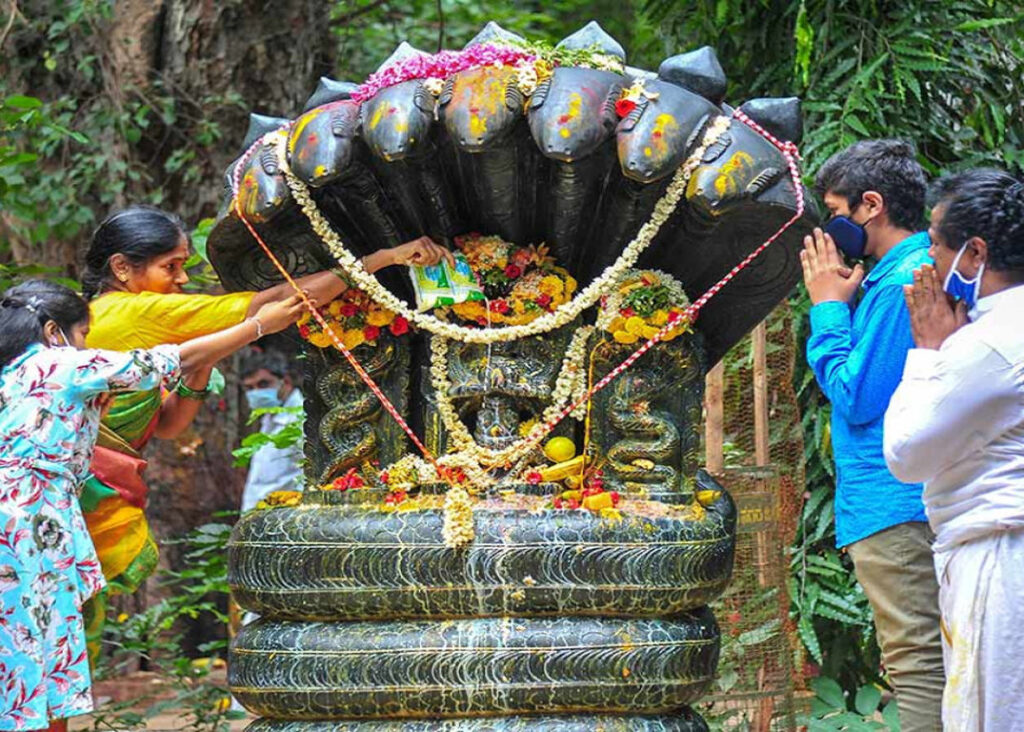
Images of snakes are drawn using red paste outside houses and temples as a symbol of protection against snakebites. The festival showcases the intertwining of spirituality and reverence for nature in Nepalese culture.
Difficulty Level of Mardi Himal Trek in July
Let’s explore the difficulty level of the Mardi Himal and uncover the reasons why it can be an exhilarating and rewarding endeavor.
Weather Conditions
July marks the monsoon season in Nepal, which means you can expect rain showers and cloudy skies. As you ascend higher, the temperature drops significantly, and snowfall becomes common.
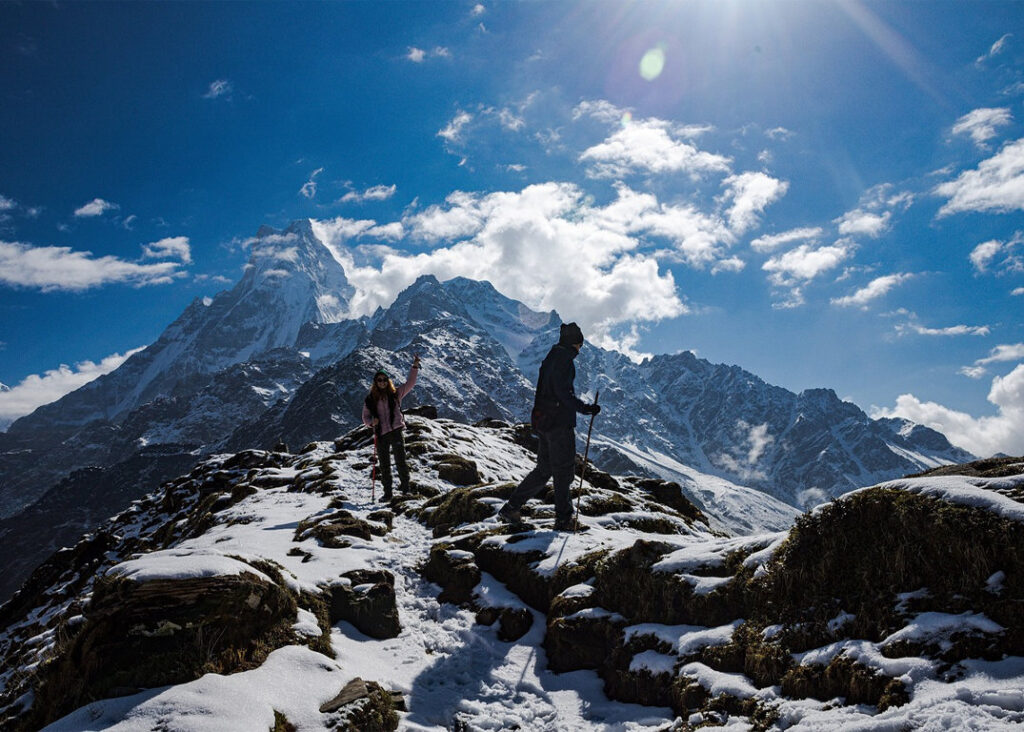
The combination of slippery trails, and unpredictable weather can make the trek more challenging than in other seasons. It’s crucial to be well-prepared with proper clothing, gear, and a reliable trekking company to ensure safety.
Trail Conditions
The Mardi Himal Trek in July presents its own set of trail conditions. The monsoon rain can make the paths muddy and slippery, requiring careful footing and balance. The snow-covered sections demand extra caution as well.
You may also Like: Mardi Himal Trek In March: Weather, Difficulty, Route, Travel Tips, and More
However, if you are an experienced trekker or up for a challenge, the pristine winter landscapes and the relatively fewer crowds can make the trek all the more enticing.







